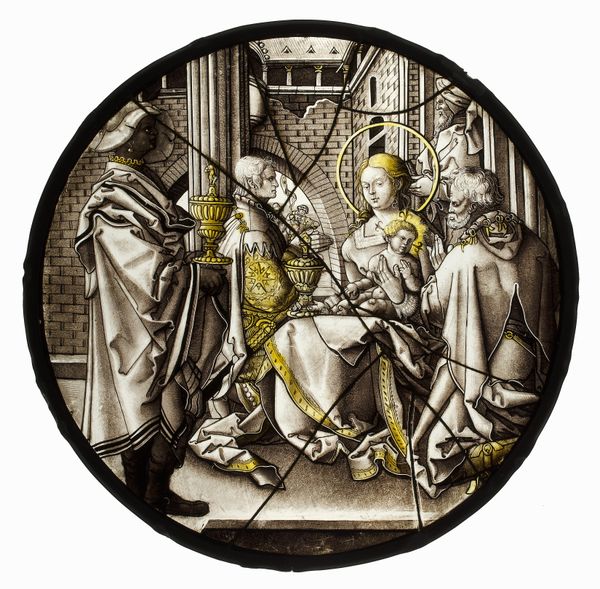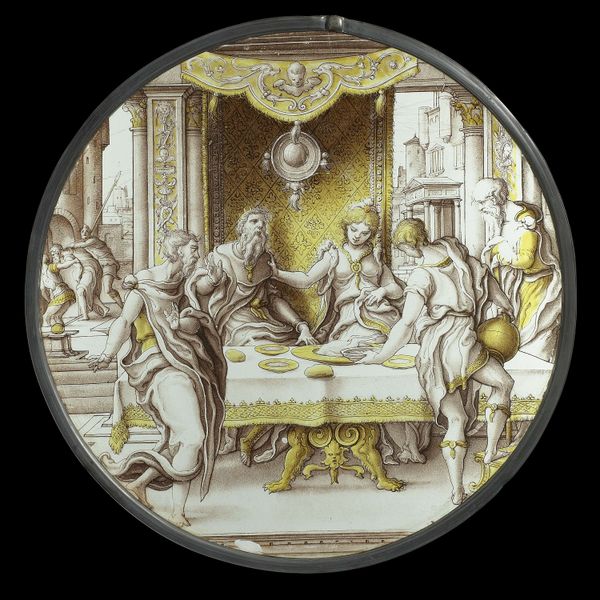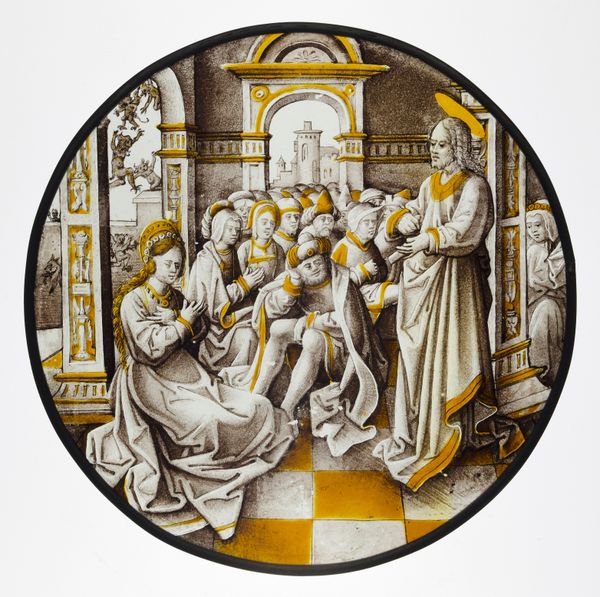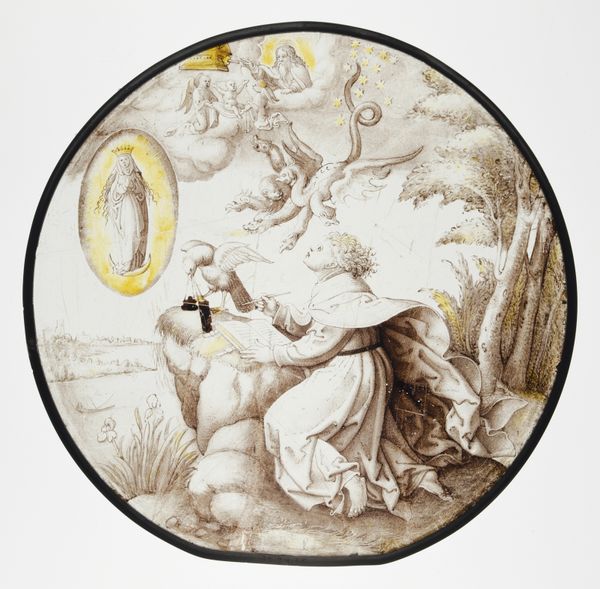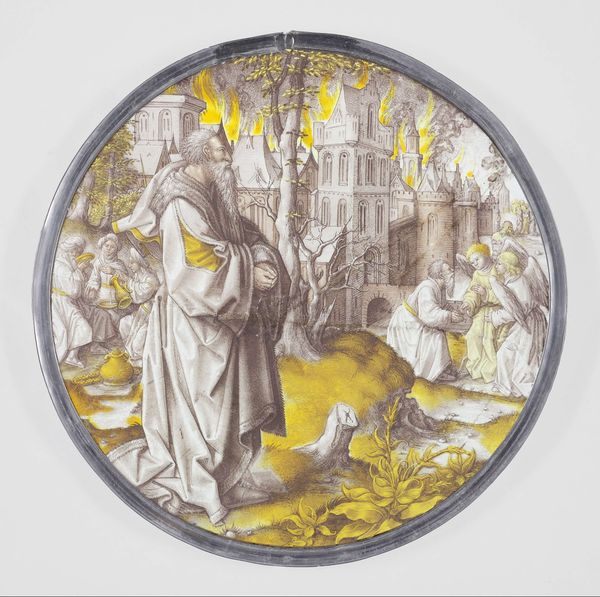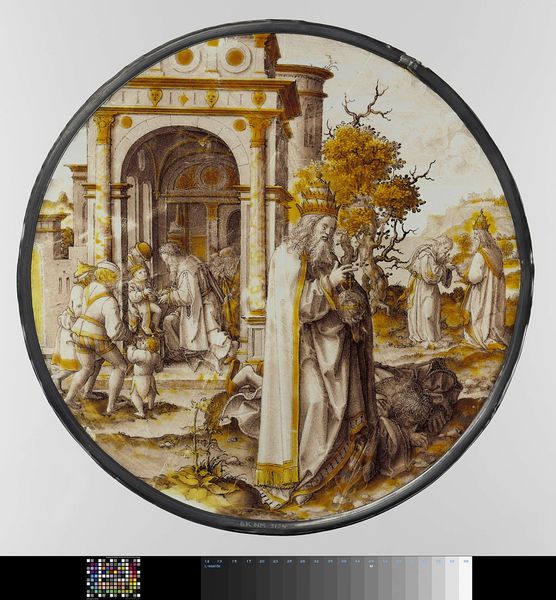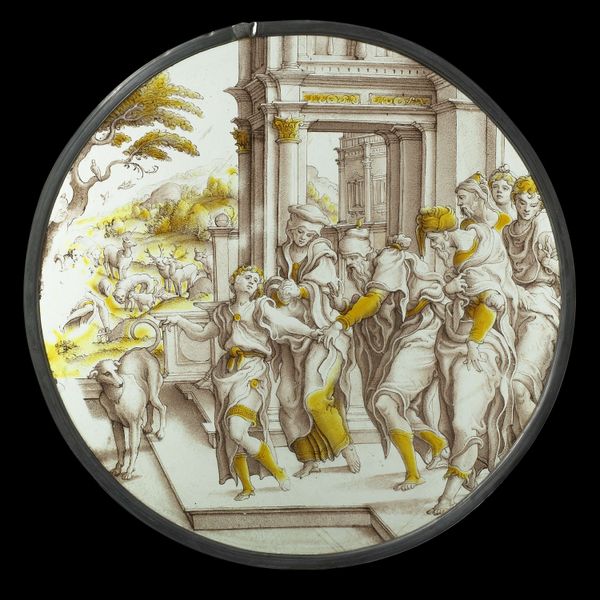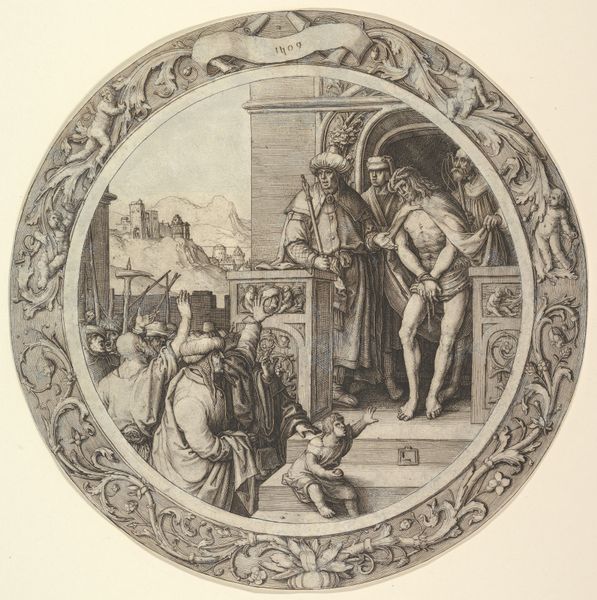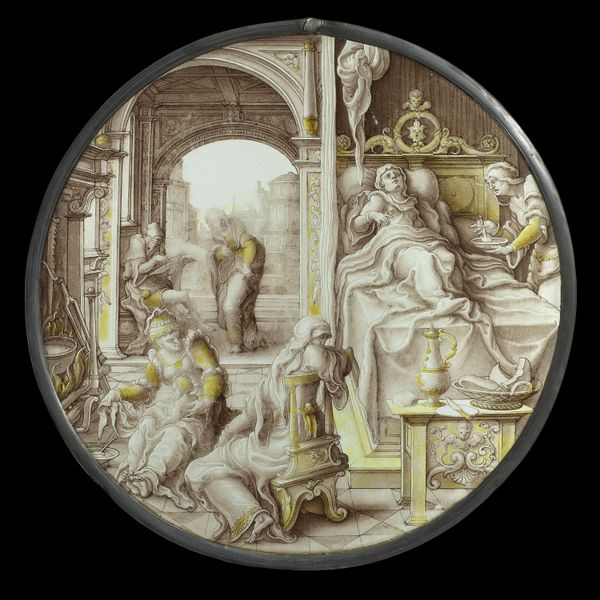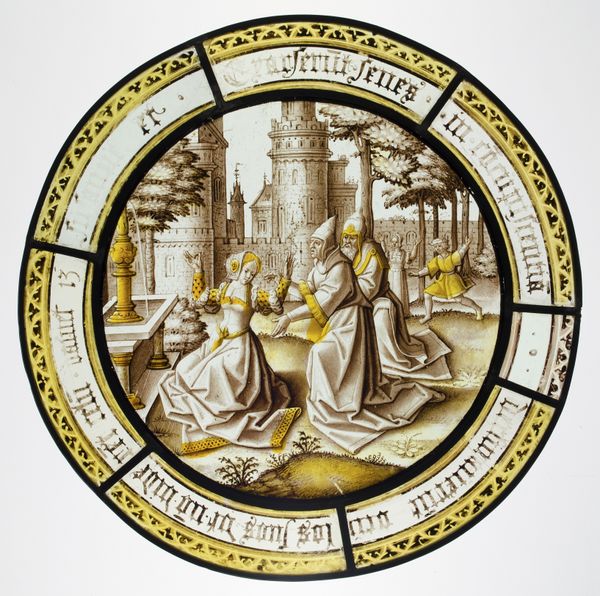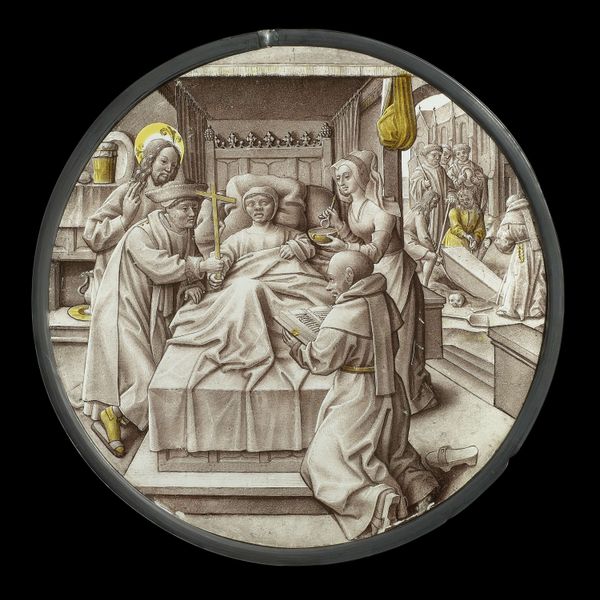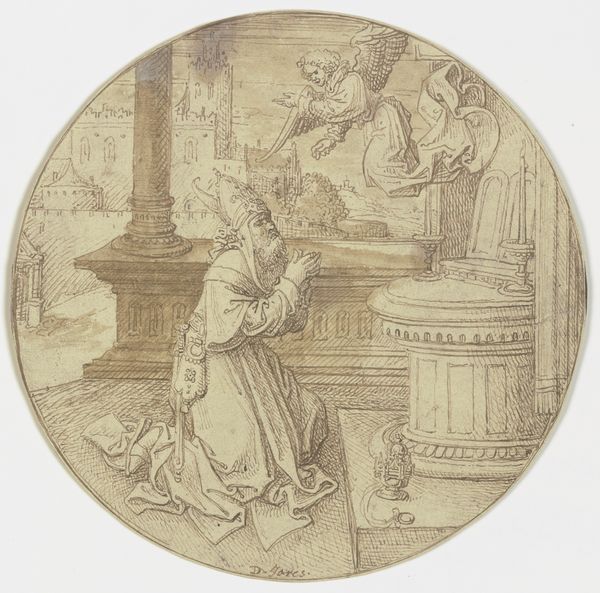
glass
#
medieval
#
narrative-art
#
sculpture
#
glass
#
history-painting
Dimensions: Overall Diam.: 8 1/2 in. (21.6 cm)
Copyright: Public Domain
Editor: Here we have "Roundel with Daniel Slaying the Dragon," made around 1520, in glass, by Pseudo-Ortkens. I find the stark contrast of the figures against the architectural background quite striking. What stands out to you about the composition of this piece? Curator: The composition’s circular format, or *tondo*, creates a self-contained world where elements converge to a central dramatic point: Daniel confronting the dragon. Notice how the artist orchestrates a clear visual hierarchy through contrasting values, the whites of the figures, for example, standing out against the greys of the buildings, reinforcing their spatial relationships. How might the interplay of light and shadow affect your reading of this roundel? Editor: It does direct the eye to the narrative elements of the dragon and Daniel; almost creating a staged effect using light and dark. Do the varied textures created through the use of glass inform the story? Curator: Precisely. The texture certainly is strategic; the subtle variations of the glass animate the surface, preventing it from appearing static. The dragon scales and clothing folds provide an optical rather than a tactile experience. Consider how the lack of traditional painting leads one to understand the story in simplified abstract gestures. Editor: So it’s less about realism, and more about how the materials express form? Curator: Exactly. The *tondo* serves less as a literal depiction of an event and more as an orchestration of shape, light, and texture. Ultimately, Pseudo-Ortkens prioritized the interplay of formal elements, allowing viewers to engage with the visual drama on an aesthetic plane. Editor: That's a good point; I had assumed the medium was only to carry a representational goal. Curator: By acknowledging how formal construction and visual relationships produce meaning, we’re challenged to go beyond narrative concerns.
Comments
No comments
Be the first to comment and join the conversation on the ultimate creative platform.
